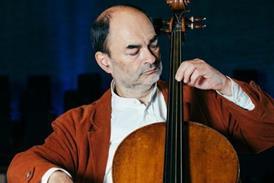Hyperscanning demonstrates that the brains of a patient and therapist become synchronised in a music therapy session

New research demonstrates that the brains of a patient and therapist become synchronised during a music therapy session.
The research, published in the journal Frontiers in Psychology, was carried out by Professor Jorg Fachner and Dr Clemens Maidhof of Anglia Ruskin University (ARU).
It was the first music therapy study to use a procedure called hyperscanning, which records activity in two brains simultaneously, providing an insight into the way that people interact.
During the session described in the study, classical music was played as the patient discussed a serious illness in her family.
Both the patient and the therapist wore EEG (electroencephalogram) caps containing sensors, which capture electrical signals in the brain, and the session was recorded in sync with the EEG using video cameras.
At one moment during this study, the patient’s brain activity shifted from displaying deep negative feelings to a positive peak. A few seconds later, as the therapist realised the session was working, her scan displayed similar results. Both subsequently identified this as a moment when they felt the therapy was working.
Lead author Jorg Fachner, Professor of Music, Health and the Brain at Anglia Ruskin University (ARU), said: ‘This study is a milestone in music therapy research. Music therapists report experiencing emotional changes and connections during therapy, and we’ve been able to confirm this using data from the brain.
Music, used therapeutically, can improve wellbeing, and treat conditions including anxiety, depression, autism and dementia. Music therapists have had to rely on the patient’s response to judge whether this is working, but by using hyperscanning we can see exactly what is happening in the patient’s brain.
Hyperscanning can show the tiny, otherwise imperceptible, changes that take place during therapy. By highlighting the precise points where sessions have worked best, it could be particularly useful when treating patients for whom verbal communication is challenging. Our findings could also help to better understand emotional processing in other therapeutic interactions.’



































No comments yet